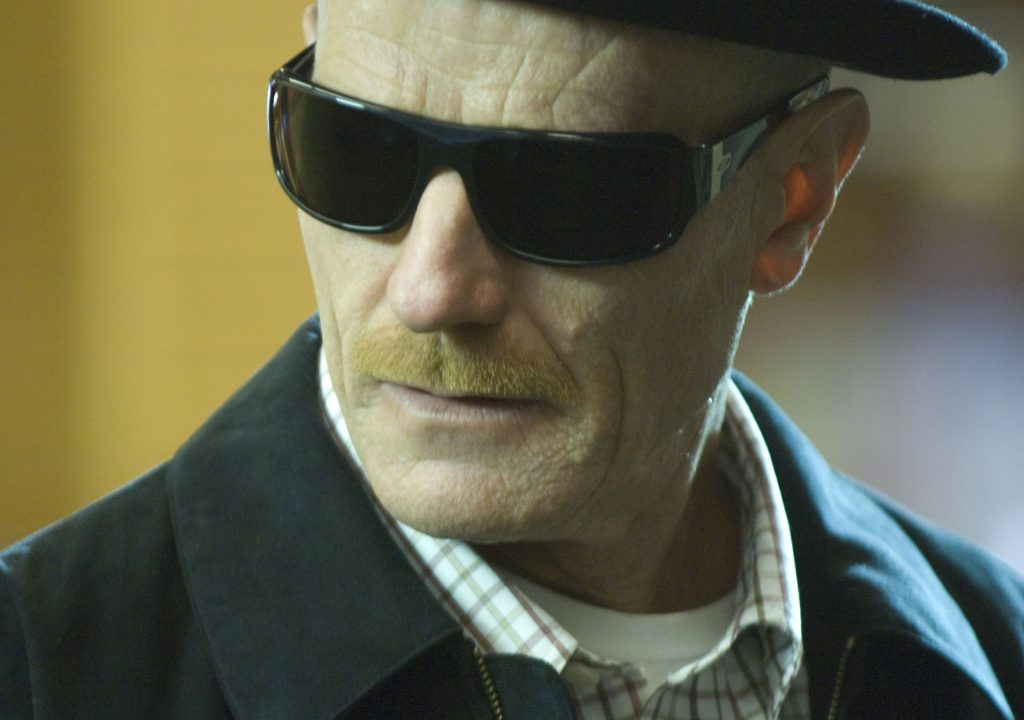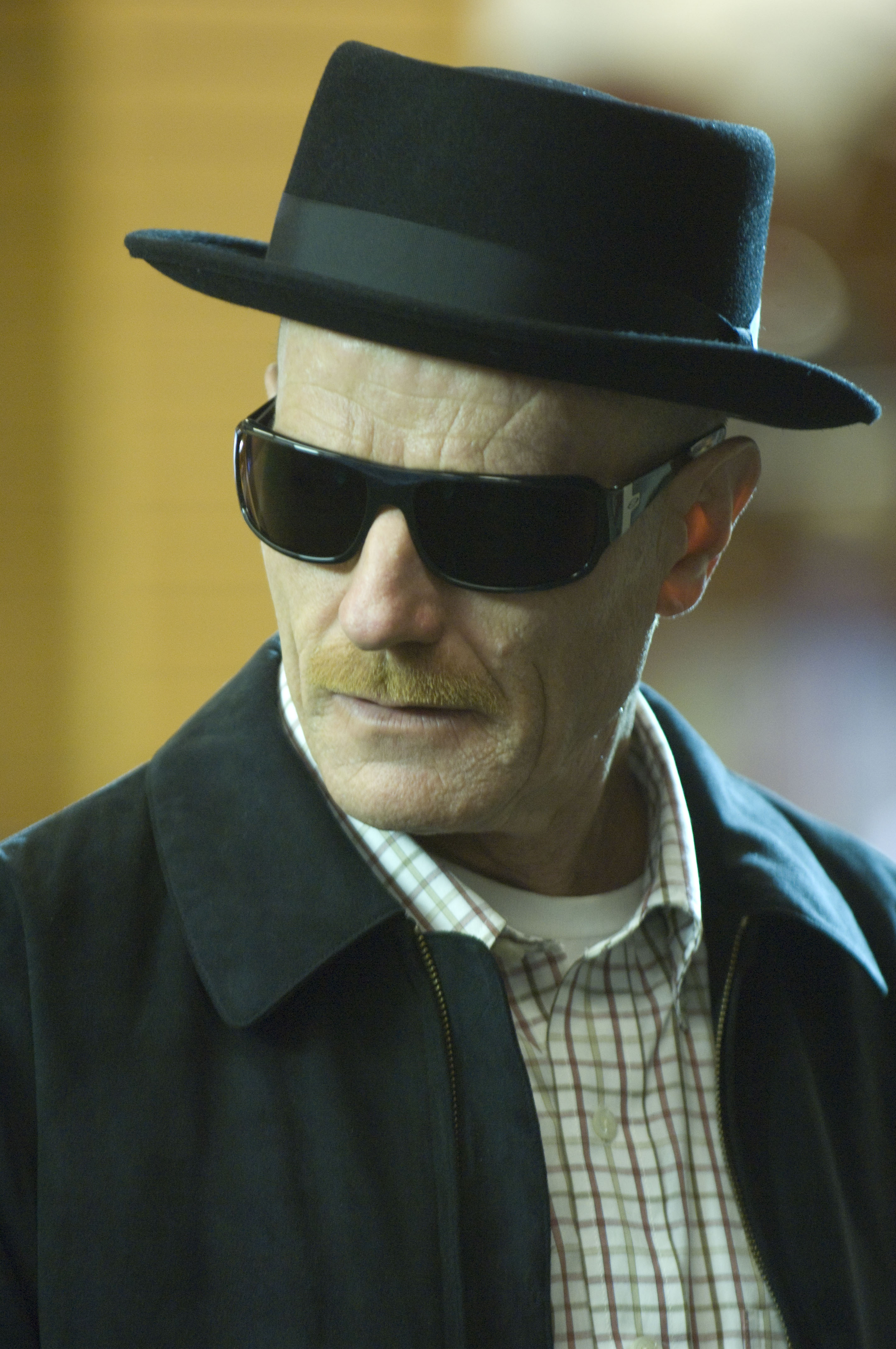
If you’re an editor who loves great television then you are going to be incredibly jealous of the editor that is the subject of this edition of Art of the Cut. After paying her dues as an assistant editor on movies like “Reservoir Dogs”, “Goodwill Hunting,” and “Without A Trace” to name a few, Kelley Dixon moved into the editor’s chair for the seminal TV series, “Breaking Bad.” She has also edited on the fantastic spin-off, “Better Call Saul” as well as episodes of “Walking Dead” and Michael Mann’s Pilot, “Luck.” She also edited the pilot episode of the recently introduced AMC series, “Preacher” and she’s just completed a new pilot for Amazon called “The Interestings.”
HULLFISH: What got you interested in editing?
DIXON: I was a journalism major in college and we had a broadcasting class where we had to edit, so I kind of started there and I thought it was fun. Then when I got out to Hollywood, I really wanted to be a writer for advertising. I tried to get in every mail room that I could and a my cousin knew the guy who was running the mailroom at MGM/UA at the time. They had an opening
so I started there. Then I became a production assistant on “thirtysomething” I thought that I really wanted to be on set, in the middle of everything but my duties took me from department to department delivering stuff, and I found that the editors work the longest schedule and they had better hours. And more importantly editing took several months and they got to be in meetings and have long conversations with above-the-line people. So, I really thought that was the best place to be because you’re really shaping the show. You’re really getting to understand what the writers, directors, and producers really had in mind. But on the set everything is about making the day. So, I thought that editing would be way better and cooler to be involved in. While I was on “thirtysomething” one of my mentors started giving me scenes to cut. He taught me how to use the machine. He told me that I was reallygood at it and I found out much later that he was just taking my scenes and putting them in the show.
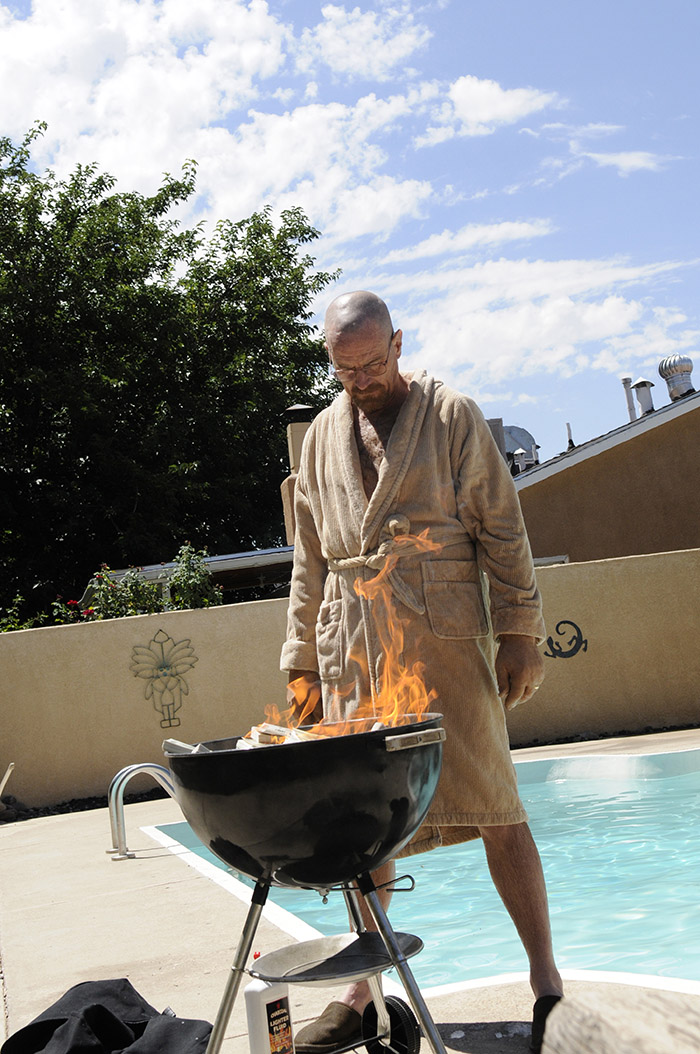 HULLFISH: (laughs)
HULLFISH: (laughs)
DIXON: He told me later they were really good. So, I guess that’s how it kind of started. I never really saw it as a career when I was in college or anything. I never really thought about it. I certainly didn’t think about it in high school, but that’s kind of how I got into it.
HULLFISH: That’s awesome. When you said,” Editors work longer” that doesn’t sound good, but you meant it as a good thing, right?
DIXON: Yeah. If you’re on a film on crew, let’s say the film will shoot for 25 days, then you’re looking for another job. But editors can work on a film for several months. So, editors, editing teams, post production, starts when filming starts and then they work for months longer. I thought, “I don’t want to look for job every month.”
HULLFISH: Where’d you go to school?
DIXON: I went to University of Chicago Lab School in Hyde Park. And then, when I was 14 my mother died so I had to move down to Alabama. So, I went to high school down there and I went to college in Colorado.
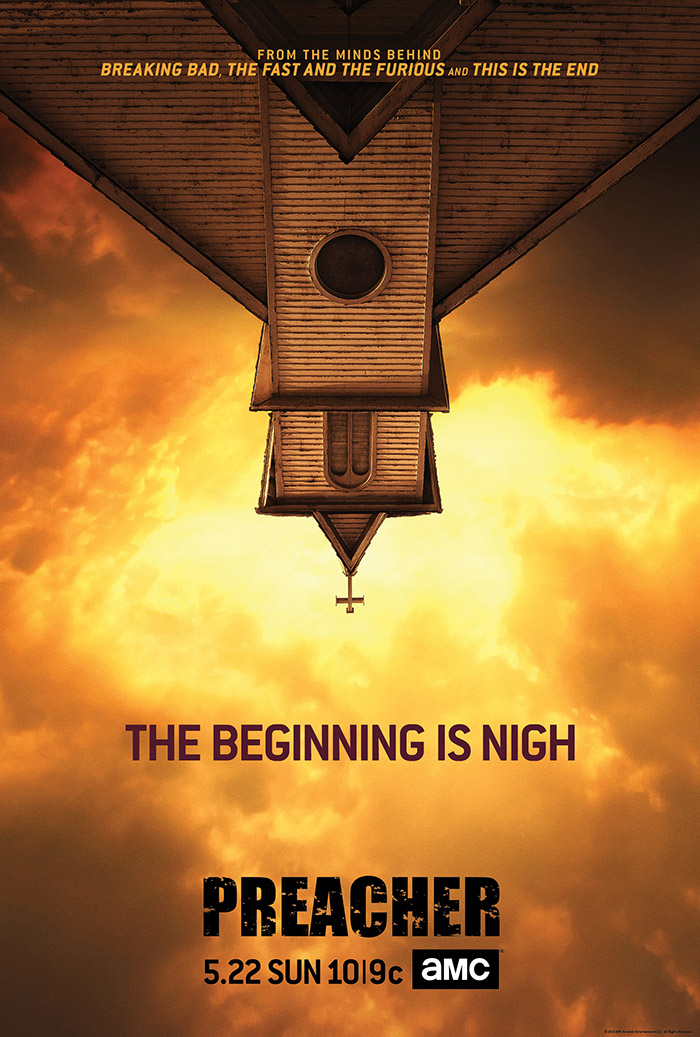 HULLFISH: Walk me through the schedule on one of your shows. Are you cutting “Preacher” now or is that somebody else?
HULLFISH: Walk me through the schedule on one of your shows. Are you cutting “Preacher” now or is that somebody else?
DIXON: No, no, I just did the pilot for “Preacher.” I started May 13th of last year. It took about 2 months.
HULLFISH: Hmm, that looks great; I’m seeing promos for it, it looks like a good show.
DIXON: I am curious to see what they did with it. It’s one of the best scripts I’ve ever read.
HULLFISH: Wow.
DIXON: It was really, really impressive. So we’ll see what everybody thinks and I’m very curious to see where it goes.
HULLFISH: I haven’t talked to too many people about pilots.Let’s talk about cutting a pilot. What the schedule is like? How long was the shooting? How long
did you have before you had your Directors’ cut? How long was the Director’s cut?Producer’s cut? When do you go to Online?
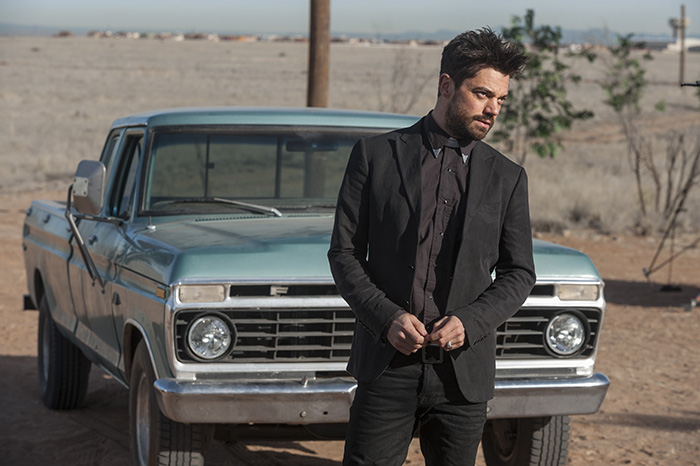
DIXON: Well pilots, they can be very, very different. It’s a really different thing now than it used to be. When I say used to be, I mean, like 4 years ago. They started to change because there used to be a set pilot season which would go from about mid-February to the end of April. it’s basically when television was pretty much driven by the four big networks. The big broadcast networks, ABC, CBS, NBC and FOX were basically driving the schedule of television which would sort of revolve around the school schedule, September to about May. So, they would take February to the end of April to develop new shows and make one pilot then decide which ones to pick up and announce them at, what they call, “the Upfronts”. Back then, people used to sign on to do a pilot around mid-February and they would work furiously. There’d be one episode of television that they would spend a huge amount of money on and they would work everybody insane, ridiculous hours. Basically, it’s such a backwards system, it’s like, we want you to do your absolute best work under horrendous circumstances. Then, we’ll put you on the fall schedule, which means even more stress. (laughs) Network pilots are still done that way but there is not one set pilot season necessarily anymore.
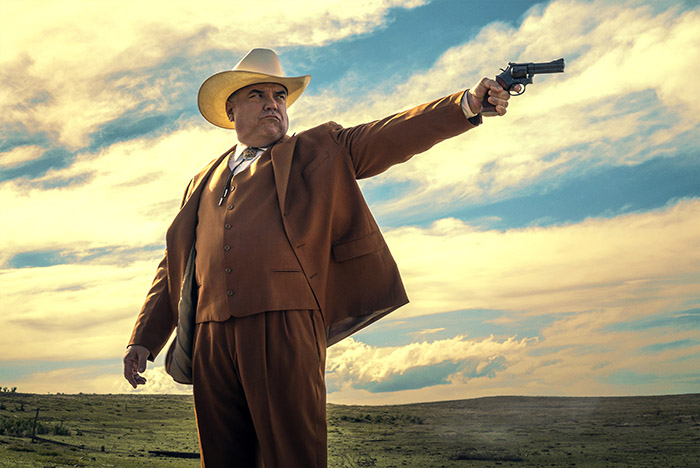
HULLFISH: Right. You got Netflix, you got AMC, Yahoo maybe, HULU, Amazon…you got all these cable networks.
DIXON: I think that PlayStation actually has its own original programming
and I think Xbox may have its own as well. Usually with the other pilots, other than the major network pilots, those are given a little bit longer on the schedule. Major Networks are usually about 7 weeks, the other cable and online stuff is usually given about 9-10 weeks for a pilot.
HULLFISH: Got it. I want to hear specifically about you.
DIXON: Okay.
HULLFISH: So, what did “Preacher” do?
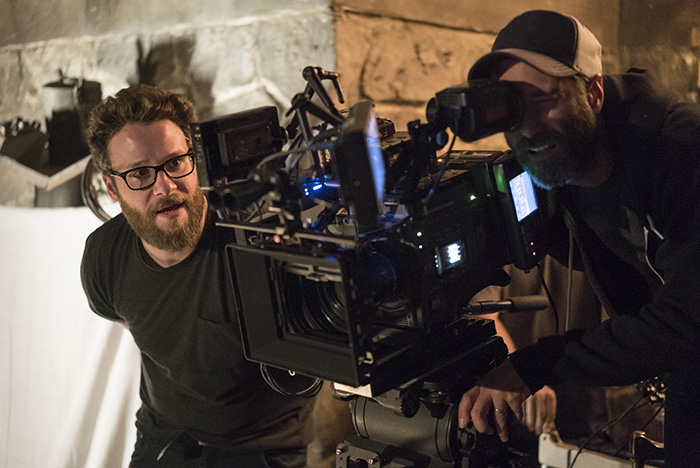
DIXON: “Preacher” was a little bit longer, it was about a 10-week pilot, and it Seth Rogan and Evan Goldberg directed. It started in May and ended about middle of July.
HULLFISH: But the whole process was about..
DIXON: Probably about 18 shooting days I think, I can’t remember honestly. They probably had between 18 to 22 days, I think.
HULLFISH: Okay, and the whole schedule to get the thing done was about 10 weeks?
DIXON: As far as getting an editor’s cut done, you’re suppose to get about 4 days in television, a lot of times you don’t. I actually needed the time. Those guys wanted to come in early and I really kind of asked to not have them come in. They were kind of like, ‘Hey we understand work in progress…’ but it was my first time working for them and I really wanted to try and put the best foot forward that I could. It’s a very, very complex and complicated script and there were a lot of big action scenes and those didn’t come to until the very end. So I was like, really super busy on these big sexy scenes. In fact, I think originally on the schedule they gave me 3 days but I asked for the 4th day, so, they didn’t come in until after 4 days. And on a pilot, every pilot that I’ve been on, except for maybe the”Luck” pilot which was with HBO, which is a whole different game because it was Michael Mann, they give you maybe 3 or 4 days to finish an editor’s cut and then they come in. The Directors Guild says the directors have 4 days for their cut after that. I think that’s pretty much followed, it has on everything that I’ve done. But many times these directors are producers as well. So they tend to stay and they work alongside the producers throughout the whole thing. So everything I’ve been on the director has been there as well.
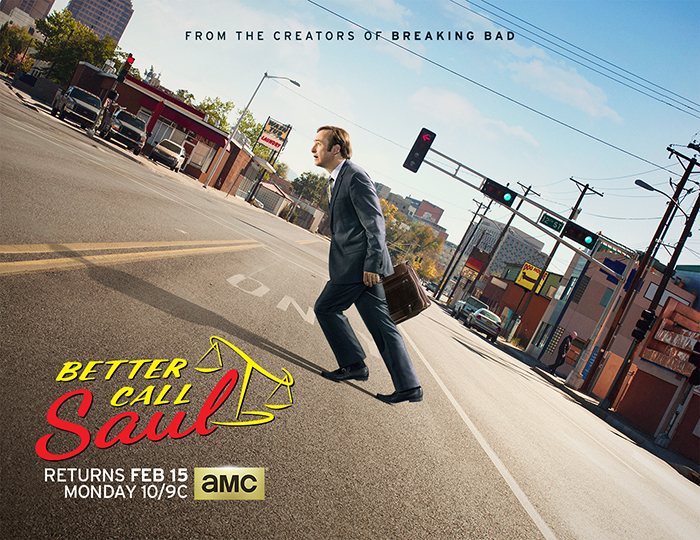
HULLFISH: Let’s talk about your actual process. Are you doing something right now? “Better Call Saul” was the last thing I saw for you on IMDB.
DIXON: No, I actually just finished a pilot last month called “The Interesting’s” for Amazon.
HULLFISH: There’re so many new players.
DIXON: Yeah, it was really good to work with them. There are no commercial breaks so it’s basically an hour long movie. This show was based on a best selling book called “The Interesting’s.” It’s about some kids who meet at a fine arts camp in the 70s and it basically traces their life and their friends, through the decades so 80s, 90s, 00s and it also jumps back and forth in time and it shows you where they are, where they were, how they got there.
HULLFISH: Let’s talk about process a little bit. And how are you watching dailies? What are you looking for? How are you actually physically doing it?
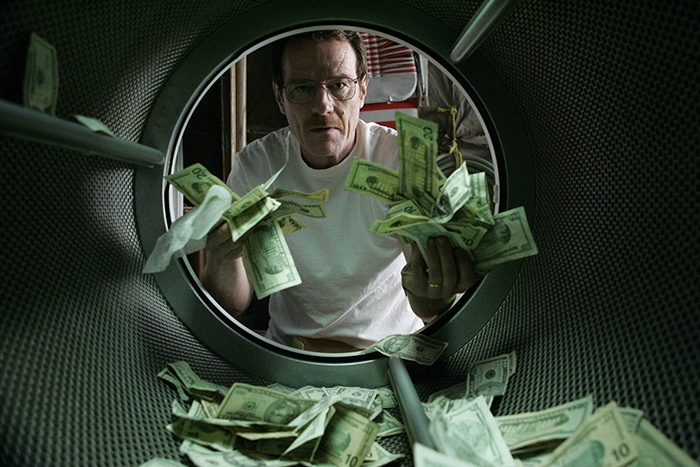
DIXON: I watch dailies in my editing room on my system and I usually watch them in multicam (quad-split) mode. It’s usually just 2 cameras: A and B, but sometimes it can be as many as 3 or 4. And multicam (quad-split) plays them in small squares, simultaneously in a quad. Nowadays they are shooting so many scenes and so many set ups … they do a lot of resets in the middle of takes, stuff like that. It just gets way too hard to watch in single camera mode. By the end a scene of dailies where you know, you got four or five hours worth, my eyes are glazed over at that point. So I started watching in multicam when I was on the show “Shameless” and there it was kind of the opposite, they had so much material and every single set up with multiple takes and was different. It shouldn’t be, but it was. Every single one was different. They like to have camera swings. Cameras would zoom and swing over and do all kinds of things with multiple cameras on the same take. So it got to where there was no way I could digest that kind of material in the time that I had, so I started watching the Quad split and I would say, “Okay I’m going to put my eyes on everything that happens and when I go back and cut this scene, I won’t necessarily remember where that swing happened but I’ll remember that I saw it. So I know it exists. Does that make sense?
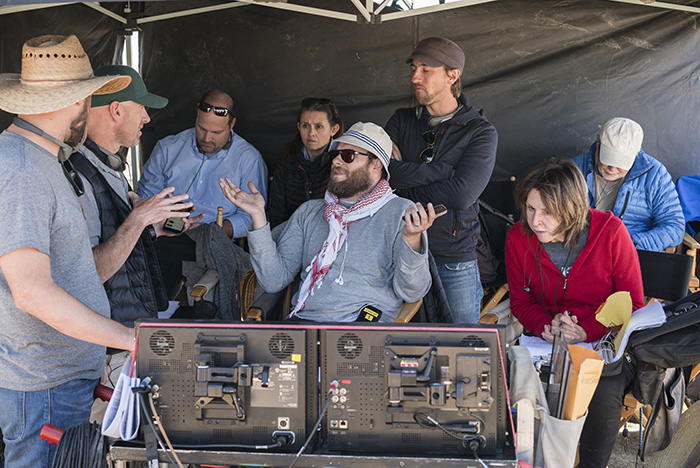
HULLFISH: Yeah, absolutely. That’s exactly what I want to hear. Of course, that makes a great deal of sense to watch in multi-cam mode because you’re looking at the performances different, right? If you watch all four of those or two of those takes, the performance would be the same in both of them.
DIXON: Obviously you are looking for nuance and stuff like that. When I first started I realized is there is an actual skill at watching dailies and every editor I’m sure approaches it differently but I found that mine has evolved and I’m much more confident about what it is that I am looking for.
I always tell assistants to try to cut a scene a day, but sometimes they will put it off and cut 5 scenes on a Saturday. What I explain to them is I’m trying to train them to watch dailies on a daily basis. You need practice. And that is not only practice cutting: it’s practice absorbing and it’s practice on starting to understand what you’re looking for, why you look for it, and how you are going to approach the scene.
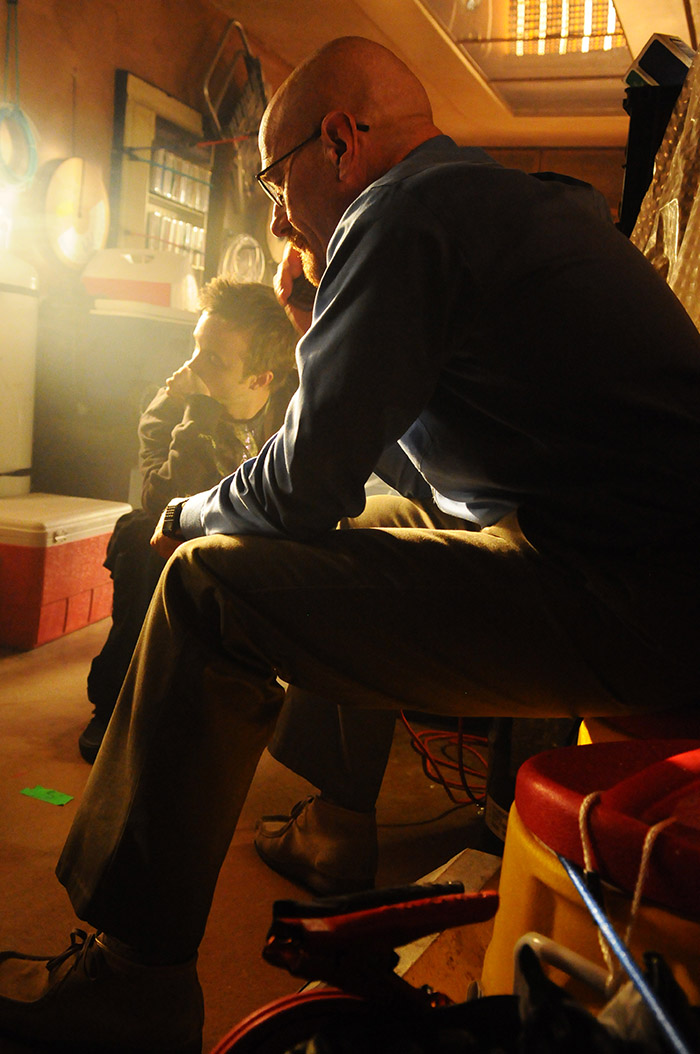 There’s 4 hours of footage and it’s going to take 2 hours to watch; 2 cameras. and I have 3 more scenes to do today. So, if you see me absorbing the material, a lot of times I’m just looking at that setup and saying, Ok, I’ve got this, I’ve got, another tracking shot and I start to kind of think about how I am going to put the scene together as I am watching. When I get into some of the closer stuff, some shots that are more interesting, maybe some shot where there’s a reveal, or something like that, I’ll start to really, really notice performances even more. I’ll start to notice if there’s something in a performance that I am really trying to make my way towards. And by then, I’ll have an idea in my head of what the scene means, who’s scene it is, and what’s the object of the scene or the subject. I’ll notice these different nuances in the scene.
There’s 4 hours of footage and it’s going to take 2 hours to watch; 2 cameras. and I have 3 more scenes to do today. So, if you see me absorbing the material, a lot of times I’m just looking at that setup and saying, Ok, I’ve got this, I’ve got, another tracking shot and I start to kind of think about how I am going to put the scene together as I am watching. When I get into some of the closer stuff, some shots that are more interesting, maybe some shot where there’s a reveal, or something like that, I’ll start to really, really notice performances even more. I’ll start to notice if there’s something in a performance that I am really trying to make my way towards. And by then, I’ll have an idea in my head of what the scene means, who’s scene it is, and what’s the object of the scene or the subject. I’ll notice these different nuances in the scene.
So for instance, with “Breaking Bad” or “Better Call Saul,” the directors like a lot of wide shots. They like really, really big and expansive wide shots where they send the camera up 50 ft. up in the air or more. And I’m just watching small people move around in the background. I don’t really need to watch the whole scene on this giant wide shot because I’m probably only going to use that shot one time. Honestly, I am not looking for sync dialogue because you can’t tell what they’re saying anyway. I’m looking for position; I’m looking for where the sun is or something like that. So when I look at setups like that in dailies, if I got 2 of those, I’m like, ‘Okay, I can fast forward through that. I don’t really need to sit there for 5 minutes and watch that setup in full. There was a scene in the first episode in “Better call Saul” this year that was in a bar where Jimmy and Kim were chatting and then they’re sort of interrupted by a guy on his phone.
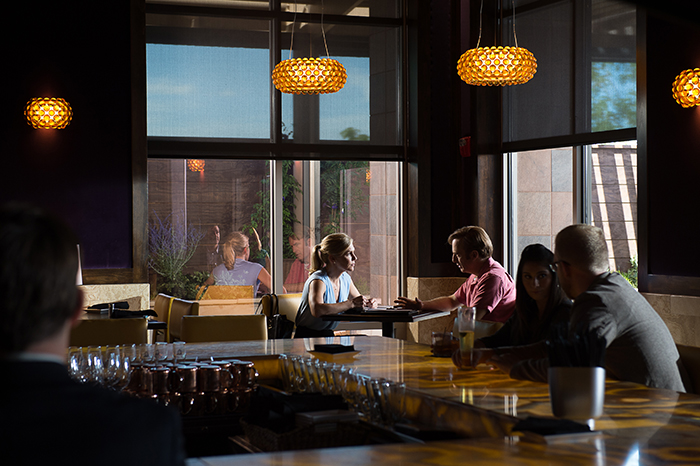
HULLFISH: And they scam him with some high-end tequila or vodka or something…
DIXON: Yeah. Okay, that scene that had 9 hours of dailies.
HULLFISH: Oh God!
DIXON: Yeah, in fact, it was more like 12 hours once you included the back end of that scene where they were sitting at the booth. That was another 3 hours. The front half of the scene was 9. The director is a writer and a producer and he’s a friend and I was like, “What in the hell?!” I struggle to think about how I actually approached that 9 hours. I just started watching but then at the beginning, I was watching for setups. You have a fairly intimate conversation between two people: Kim is questioning Jimmy, and he is telling her his feelings about the future. And then on the other side of the bar, you have a guy who’s conversation is really kind of interesting to hear but has nothing to with what they’re talking about but we need to do a little smattering of it and then when we finally identify him, we have to be on the entirely other side seeing it’s him. but not at all at once
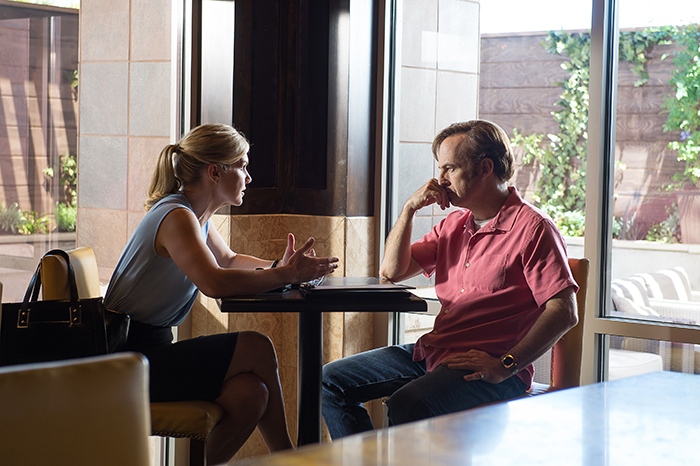
HULLFISH: Are you noting these moments and camera moves with locators or marks in the Avid? Or is everything in your head, or you’re taking paper notes?
DIXON: I’m kind lazy in that respect. Everything is pretty much in my head. I don’t really take notes. There are some scenes that have a lot of meaning and a lot of subtext buried in them. So many times with scenes like that I’ll watch the
dailies and then not cut them right away. I might sit on them for a day or so.
You know you got these pieces and you wanna come up with agreat way of putting them together and you want the scene to mean a lot, and want to get
every stinking emotion out of it.
HULLFISH: But you’re taking a long view on the characters in the relationship, instead of just the scene view.
DIXON: I think that that becomes way more important. Television in this day and age is fantastic. There’s way more opportunity for long-term character development you know.
HULLFISH: Talk about collaborating with the producers to develop those relationships.
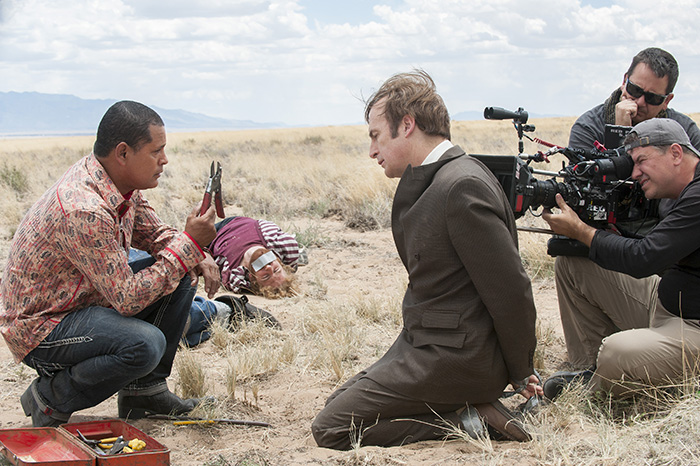
DIXON: I’ve been able to work with directors and producers and writers in the editing room who are appreciative of talking about characterization and talking about character motivation. I find that I’m disappointed when I talk with some editors, or different producers or directors, a lot of times they don’t really know why they did what they did.
HULLFISH: Have a purpose, sure. And when working in television, you’ve got to know where the characters and the show are GOING to go. You’ve got to probably rely on the showrunner for that direction.
DIXON: If you don’t know where it’s going then you can’t make an informed decision. When we were in the room and we were talking, it may sound like a little bit of banter between writers and producers. But as an editor you pick up on what’s important to them and hopefully it can guide your decision making: “Well this character is just not sympathetic enough; or this character should be happier here.” Then I think, “I don’t really have footage to make him happier here but maybe in this other scene where he discovers such and such I can make him happy about that.”
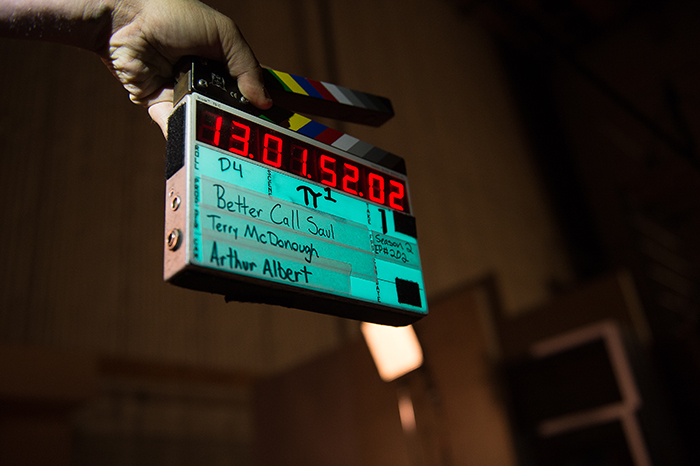
HULLFISH: Different takes will have a different kind of temperature to them. An actor doesn’t deliver the performance the same way every time and by choosing which take you’re using you are manipulating that performance. You’re shaping that performance in editing.
DIXON: It is very, very important to understand your material, understand the script, understand the characters, understand what all of this means in terms of not just putting the pieces together so they look cool.
My favorite scene in “The Interestings” was a scene where the main character, Jules, played by Lauren Ambrose, was in her 20’s and doing sort of improv/mime in an acting class. We (the audience) are thrown into the scene not understanding where ‘we’ are. But we’re seeing Jules feeling very uncomfortable and hearing a voice calling out very personal and intimate commands. Jules is acting like she’s taking a shower and the voice is her teacher telling her to wash private parts of her body; in front of the whole class. He proceeds to put her down and embarrass her further, noting that she’s not ready to be open and vulnerable, and thus a lesser actor.
What I love about this scene, is it’s the only time in the whole episode (in my opinion) that we, the audience are absolutely experiencing this moment with Jules. And it’s because we have no choice but to be with her as the scene starts. We don’t know where we are; we hear the embarrassing commands; we cringe as we see her vulnerability. For a few moments, we can’t avoid it. We have no way out.
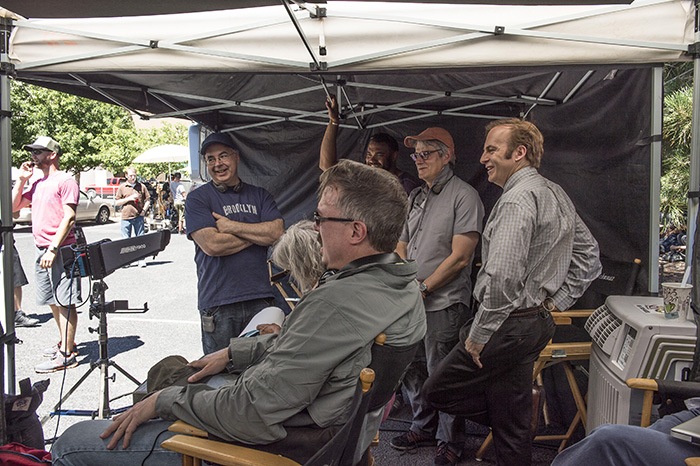
What I realized as I watched the dailies, was that the Acting Teacher (gave great performances in his takes as well!) was making some choices to play it meaner or more pointed. Not all takes, but some. And I also realized that it was very easy to get caught in the trap of letting him be more mean, and thus creating more sympathy for Jules. But that was not the story. The scene was about Jules understanding herself, that acting was not her path, and honestly, all the comments the teacher was making, no matter how harsh, were very true. So I listened for less ‘mean’ performances and ended up stuffing many alternate reads into the actor’s mouth.
The scene had a ton of subtext to it. It was one of those that I watched on one day and cut it a few days later.
HULLFISH: So played a lot more on reaction shots during the “villain’s” dialogue?
DIXON: Right. The actress was incredibly good and I played it on reaction shots. But also, when I was on her and not on sync dialogue I looked for audible performances of him that were not as mean and looked for things that were a
little softer so it looked like he’s basically just telling her the truth.
HULLFISH: That was a way for you to downplay his entire role. So the audience focused on the correct character.
DIXON: That’s exactly what I did. I pulled him down way down. I found other takes where I could just put the words in his mouth that weren’t as mean. And I played a lot of it on the actress and really showed how it was really more about what she was learning about herself rather than about this guy being a jerk.
HULLFISH: So you needed to be true to the scene objective, which was for her to learn something about herself.
DIXON: Yeah and it was funny because it wasn’t really apparent in the dailies or necessarily in the script. I remember having to really think about it quite a bit. At first glance the scene was very uncomfortable. But I realized that there’s a lot more to this scene on the surface.
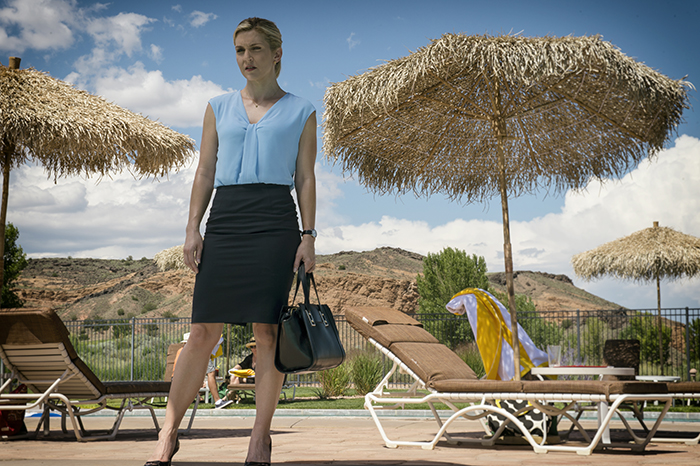
HULLFISH: After watching dailies, what’s your approach to a scene? Do you just dive into it?
DIXON: I always look for a second way into a scene just because I find that it keeps you very fresh with your material. You may not use it or when the
director comes in they absolutely make you throw it in the trash and do it using the shot they designed, but I find that if you’re constantly looking for another way in it keeps things fresh and many times the director will say,“I didn’t want to do that, but it’s really interesting.” Or you save the other shot for a certain time in the scene. I find that editors that I look up to will have interesting and unusual ways of using footage that seems fairly conventional. I look for that in my own work and I’m looking for that in other people’s work. When I review the editing of my assistants I’ll always be looking for “Are they surprising me in any way?” Are they doing something that I didn’t expect. You can definitely get into a conventional rut in editing… being pedestrian and dull. A lot of times when I’m doing something I’m like, “Oh God! This is so terrible. What I’m going to do here because this is just not good.” So I’m always looking for another way into a scene… train my eye to be on the lookout for something different or unusual. I’ll watch dailies and usually about halfway through those dailies I will sort of have an idea of how I want to approach it, like “How does this fit in with the character? And how does this fit in with the story? What is this illustrating? What is the bigger picture here?” It’s not just about putting pieces together. It’s about a cohesiveness of the entire story.
HULLFISH: Love it. That’s great.
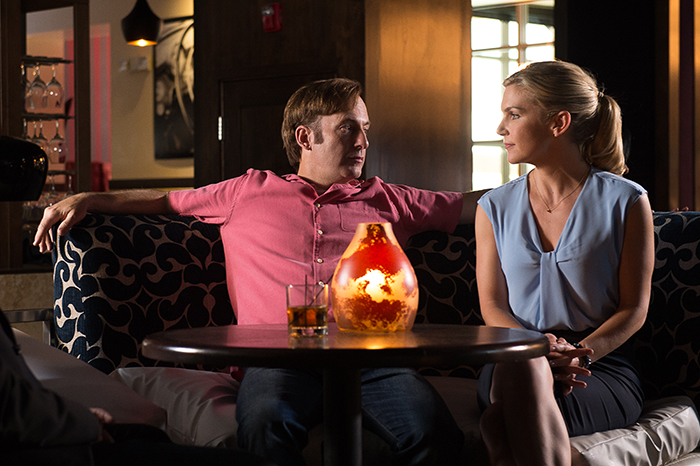
DIXON: I’ll just start working on the scene. If there are issues like in that scene that we’re talking about earlier in that restaurant – to me one of the biggest issues was, “How do I have this conversation with Jimmy and Kim but then get to the other side of the table and see this guy across the bar?” That was one of the biggest objectives. How do we make sure that we’re going back and forth, back and forth in this conversation on one side of the table. And then we have to get to the other side? At some point I’ve got to work my way over there. How do I get there?
HULLFISH: How did you move up from assistant?
DIXON: I did the pilot for Breaking Bad and then got moved up before the show got picked up. My editing job was contingent on the show getting picked up. Nowadays, assistants are moving up like crazy. Many times I can see the difference between a seasoned editor and a new editor. Usually it’s the way that they approach the actual story. It’s not usually the pieces they put together. It’s usually the way they can visually and audibly articulate the nuance of the story. Does it have depth, or is it flashy.
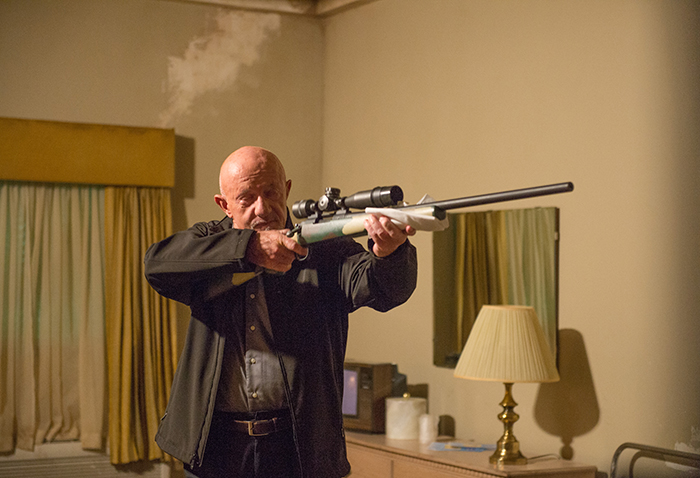
HULLFISH: Yup. Let’s explore that a little bit. How are you a storyteller? Give me some examples of your ability to tell a story in a cut.
DIXON: One of the things I learned on “Breaking Bad” that I’ve taken into everything since then, is that it’s way more interesting and fun to BE WITH Jessie and Walt as they do stuff, not WATCHING them do stuff from far away.
One of my favorite shots is a profile shot because most of the time a profile is nobody’s P.O.V. A profile shot almost seems like you are right next to that person, which is a very intimate place to be. As an editor it’s basically like you’re able to use it to put the audience into a position where nobody is. It’s almost like you’re just sharing a secret or sharing a little bit of intimate space with the actor Another trick: on “Breaking Bad” we got to be very creative with a lot of different editing styles because it was encouraged. We started to get really good at it.
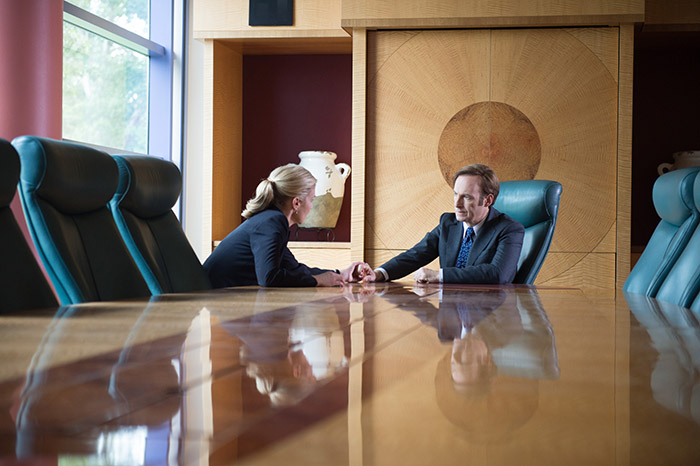
One of the things that I that I did in “Breaking Bad” was to cut things that were intentionally out of sync and then letting the sync catch up. One of the ways I definitely did that was in this season of “Better Call Saul.” It was a scene with Kim on the phone with some Post-It notes. She’s trying to drum up business and everybody is just saying “no no no”. And it was written in a systematic regular way where she’s making phone calls and then coming up and crossing out names and I just took it and started to jumble up those phone calls. So it made it seem more of a cacophony. The director saw it and loved it but I think when the writer saw it, it really threw her. Writers get very caught up in what they’ve been living with for it so long, and I respect that because I’m a writer as well so I totally understand.
HULLFISH: I’ve heard in multiple interviews that you’re dead as soon as you start trying to edit like you think they want you to edit instead of like you want to edit.
DIXON:That’s true. I constantly have to remind myself that I believe I have very good instincts and I need to just do what I think. Really there’s so much in this business that’s placed in trust. You trust the D.P. to bring it. You trust actors to bring it. You’re not wanting tell them what to do, you have seen what they’ve done before and you’re saying, “I like you have done and I really want that on my show.” They don’t want to tell me how to edit. They’ve seen “Breaking Bad” or “Shameless,” or “Luck”, “The Walking Dead” … or whatever I’ve done before and they really like that. What I’ve found is that what people want to do is to hire you and forget about it. They want to be able to say “I got the best person I could get for this job” and I’m gonna come in and they’re going to love it, right?
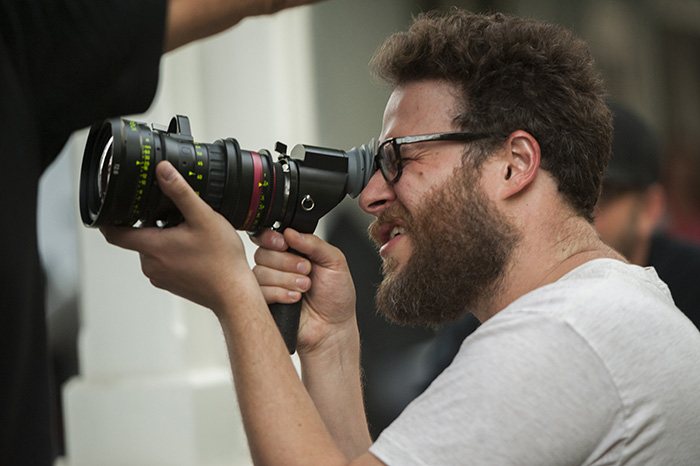
HULLFISH: Yup.
DIXON: And if they don’t love it they can know that they are in good hands because we can fix it. Once you start to realize that, you can rely on your instincts. I just finished working with Mike Newell – he’s a big feature director – and I just did my job like I always do it. And you know, he hardly made any changes in my editor’s cut. He had four days and we spent most of the time just sort of shuffling scenes. I was a ecstatic about that because they were really hard scenes. I mean one of them I had seven hours of dailies. It took me three days to do this one scene. The last thing I wanted to do was have to rip that house of cards apart. You know.
HULLFISH: Right.
DIXON: We ended up working fantastically together. One of the best experiences I’ve had as an editor was this Amazon Pilot with Mike Newell.
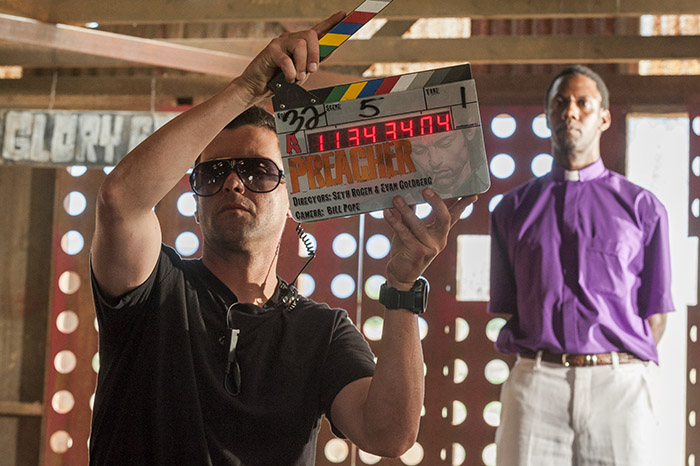
HULLFISH: Any wisdom for up and coming editors?
DIXON: When making a plan for cutting a scene, developing character, etc. – that an editor should be able to answer why they did what they did for almost any moment. There is always a small percentage of cuts where you cut because you had to (actor, camera didn’t cooperate) or just because it ‘felt’ right (in service to your other decisions). Many times I watch dailies, then digest them for awhile before beginning to cut. Mostly because I’m forming my own understanding of character, motivation, how this scene juxtaposes with those around it, what does it mean. I need to be able to answer those questions before I’m finished with the scene. Otherwise, it’s just a puzzle I’m fitting together… without much depth, meaning or purpose. I might be way off the mark from the writer, or producers, or director. OR they might be! Many times I’ve found, that they’ve written it to be one thing. But once it’s been acted, shot, cut into a sequence, it lives and breathes as something more, or entirely different. You have to be willing / able to lay aside preconceived notions and reexamine it in the new context. And much of the time, writers/producers/directors will be unwilling and force it into the original intent. But I feel it’s my responsibility to discover different ways it lives. It definitely trains you to be more rounded in your approach. And to constantly analyze your story sense and character motivation. All that to say… as an editor, be on top of your choices. Know what they mean to you, to the character, to the story. Sometimes you can cut to look cool. But mostly it should be to tell the story.
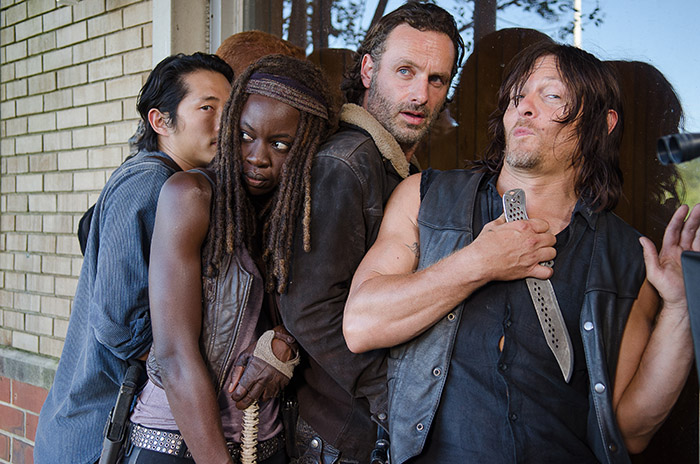
HULLFISH: What are you temping with? Do you cut without music? What is your editing relationship with music and score?
DIXON: On Breaking Bad (BB) and Better Call Saul (BCS) we do not cut with music unless we’re doing some sort of Montage. Vince Gilligan started on The X-Files and learned that if a scene didn’t work without music, it wouldn’t work with it. Also, he found that it was a waste of everyone’s time to temp in music from some other movie. AND it was something else for the studio/network to give notes on. SO… (Lucky us!!) we don’t have to deal with it until after the show locks. And at that point, our composer comes in, spots the show with producers, and writes original cues. On both shows, there are very few cues. Much less than most shows I’ve seen.
On other shows I’ve worked on; and especially pilots; it’s quite the opposite. EVERYTHING must be temp’d. I personally, don’t like much music. Especially on a very dramatic piece. My feeling is it becomes very manipulative, expected, and the moments lose their importance. Things play much more ‘real’ when there’s no score behind them. But, like all other things on a project, you have to adapt to the aesthetic of your producers.
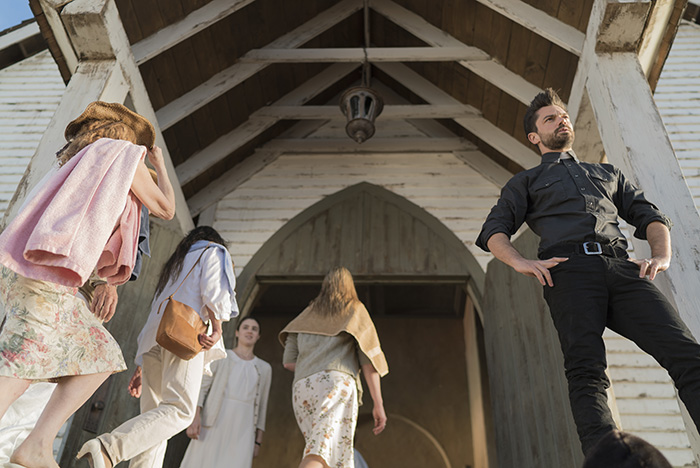
One other thing I tend to question is the plausibility of music – especially source music playing as score. And this is coming mostly from the Vince Gilligan-BB school of thought. We try to be very thoughtful of any music playing in the scene. Where is it coming from, how did it turn on / off, WHAT is actually playing, is it period correct, etc.
HULLFISH: How important is sound design as you cut and attempt transitions?
DIXON: Sound design is super important! Not sure about the ‘cutting and attempting transitions’ part. I’ve been really lucky to have a great assistant for the past few years. Chris McCaleb. He is (unfortunately, for me!) now editing on his own and I’m very proud of him. I met him on the “LUCK” pilot and finally got to hire him on BB’s final 8 eps. I’ve shared credit with him 4 times and we’ve gotten 2 Emmy nom’s together. He was a fantastic sound designer. I used to be as well, when I was an assistant. And it’s really important for an editor to be able to communicate the sound needs of a scene and then let the assistant jump in and create. And the assistant needs to be fearless!!
Also, you only get one real shot at conveying your thoughts how the scene should play. So you’ve gotta use every opportunity to sell it!
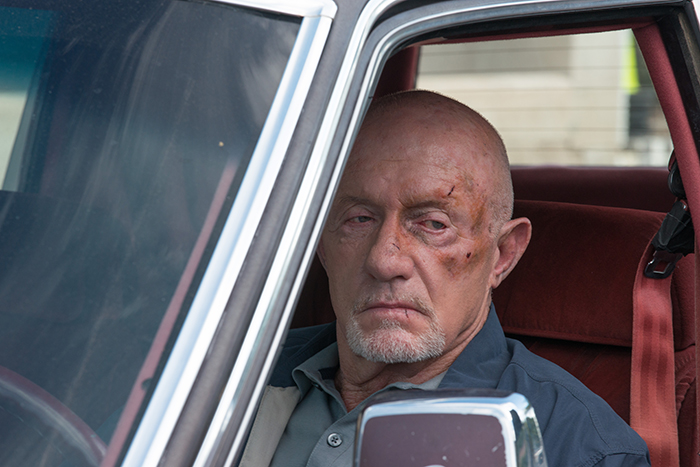
DIXON: What is affecting your sense of micro-pacing (shot to shot/in scene pacing)?
DIXON: Weird answer here… but… my heart. I’m a ‘cut-by-feel’ editor. I don’t cut by 2 frames here, 8 frames there… I cut by ‘a little trim here’… ‘nope. a little more’ — that kinda thing. I’ve always wondered about people who could think in frames and estimate like that. Vince Gilligan explained his process to me on BB once. He said he thinks in fractions of a second. 24 frames per second, 12 for a half, 8 for a third, etc. I just do it by feel. I tend to cut long in an editor’s cut. Letting looks and moments play out longer. Then they get trimmed back throughout the post process. But I also like to emphasize sudden moves or cut in the middle of words. It makes things play more fluid, natural, and propulsive.
HULLFISH: What are some of your cues or rules of making a cut? When do you cut?
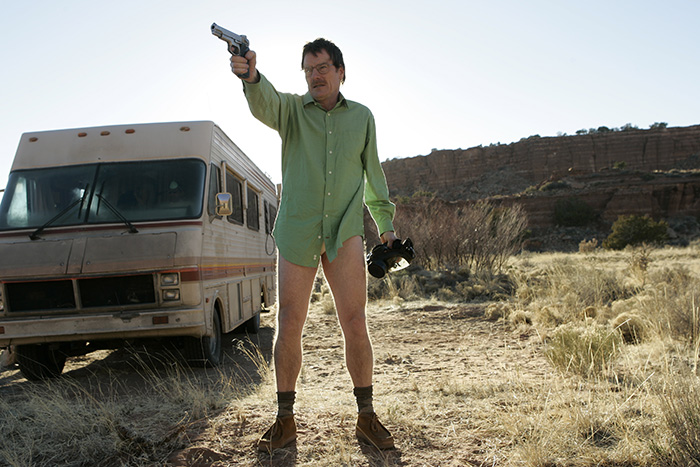
DIXON: Now I’m giving tricks away! I don’t have any rules except make sure it’s not dull or stodgy or predictable. If an actor does any sort of emphatic behavior, see if I can capitalize on it by making a cut there. I like to use wider coverage. Parts of an actor in foreground lends energy to the favored actor’s shot. I like to use wide shots where you wouldn’t expect them. My philosophy on BB and BCS was that those super wide shots usually signified one of two things — loneliness or power. One character alone in an expanse — lonely or powerful.
I don’t care about crossing the line, BUT I believe every editor should be aware of when and why they do it. In other words… I’m not cavalier about saying I don’t care about crossing the line. I think it can be a very useful skill and assist in telling the story. Obviously case-by-case basis, but, one example would be to purposefully throw off viewers’ equilibrium. Make things more frenetic, unsettling.
I try never to cut like — dialogue… cut to reaction… more dialogue… cut to (wait for it…) reaction… (yawn!!)
I definitely like making propulsive cuts. Anything to capitalize on energy. It’s also what I look for in assessing an assistant’s editing.
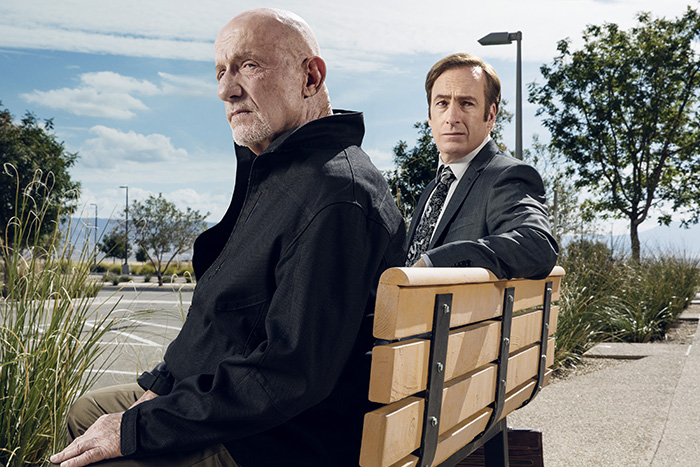
HULLFISH: In the macro-pacing and structure of an entire episode or movie, what are the arguments and notes that are causing scenes or parts of scenes to be cut or re-arranged?
DIXON: Not sure how to answer this more than to say EVERYTHING should be in service of the story. When getting time out of a show, you have to look at possible redundancy of ideas; does the audience already know something but the characters do not? Does the show go flat at a certain point? Is there something unclear?
HULLFISH: Can you think of tangible ways that you are a storyteller in the edit room?
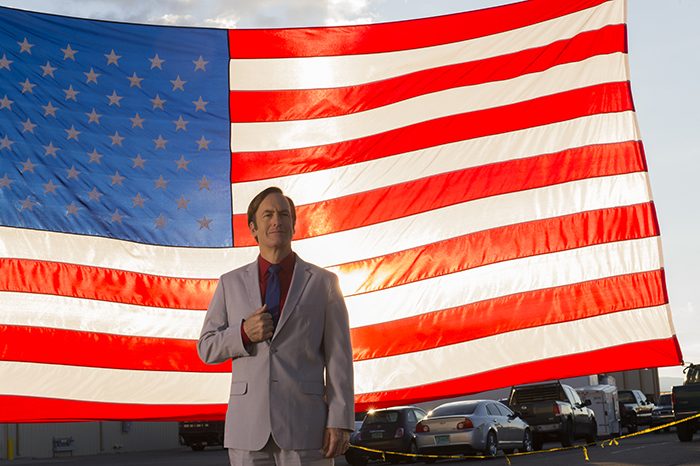
DIXON: Definitely with Montages. They show a lot, in a short time. And they are opportunities to be much more creative than conventional editing. But really, as an editor, you are the first person to mold the pieces. You find the emphases, and you decide how to show them. You decide who gets moments onscreen and whose moments are shown on the reacting actor, and WHY! You decide how to open and close a scene. What the audience is left with. Is it satisfying, horrifying, jarring, unfinished, emotional, bereft, etc. You cut actors performances together to make the best possible use of the work. You can be cutty, linger, hold characters at arm’s length or further, be close with them, be close but disgusted by them, have an intimate understanding with their inner thoughts, keep them facing away to the point of frustration — which then becomes a style of sorts.
HULLFISH: Let’s discuss differences between series – either cultural or editing vision – Preacher, Better Call Saul, Halt and Catch Fire, Break Bad,
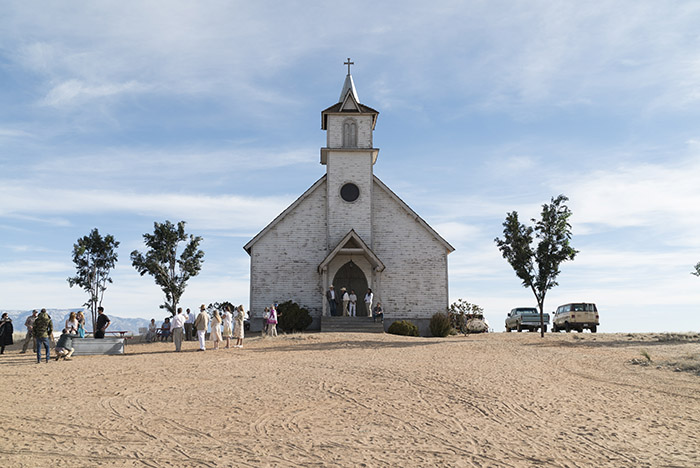
DIXON: Hmm… Well, Preacher is comic book based. Although the first season (I was told) will act as more of a prequel to the comic. I only did the pilot so I’m not there for subsequent meetings, note sessions etc. But in the pilot, things move fairly fast. There was a lot of character and environment richness in the script that, I wish more of it translated to the screen. A lot of that was for the sake of time. It was supposed to be a 1 hour slot which would make story time somewhere between 43 and 48 minutes roughly. I believe that pilot is over 60 minutes and the Directors’ Cut was over 80 minutes. But still… my take on the Seth Rogen, Evan Goldberg, Sam Catlin aesthetic for Preacher tended to be fast.
In contrast — BB and BCS take their time. Vince Gilligan likes to see and feel and immerse. He holds on wide shots. He doesn’t like to be ‘cutty’ – except when it works for the moment. He likes doing things you don’t normally see on TV — especially network TV. He likes looser, wider coverage. You won’t see many tight close-ups. Moments are left to play out.
I was only on Halt and Catch Fire for Season 1 and (I feel) they were trying to find their show. There were a lot of directors that came in throwing all kinds of styles at the wall. I don’t think anything was very consistent. And then in season 2, there was a big shift in storytelling. And I feel that’s when they began to find their way a little more. To me, the directing and editing sort of came in line with the story they were trying to tell.
HULLFISH: Collaborating with various directors on series – clearly the showrunner is the big dog and directors come and go on series
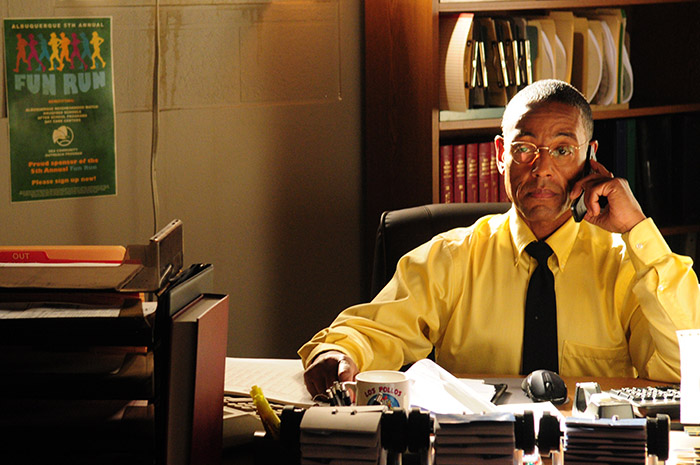 DIXON: On BB and BCS, it’s become a lot more familial. We began having a lot of the same directors as the BB seasons went on. On BCS there have been a few new people, but I actually haven’t worked with anyone new yet. Pretty much on those shows, Vince and and on BCS, Peter Gould as well, are the guys all directors are hoping to please. We don’t really get much stuff where directors are going rogue and doing their own thing. Everyone wants to do our show. So no one really goes too much off book. There are Tone meetings that I’ve heard last like 6 hours or more (I’ve never been to one!). That’s a LONG time compared to every other show out there. VG and PG are very interested in seeing directorial creativity but they do want to make sure things are covered correctly and their intent is conveyed. So mostly I’ve had longer relationships with these directors. We’ve worked together a few times by now. And many of them (luckily) respect the work that I bring to table as well. And many appreciate my thoughts on scene structure, juxtaposition, etc, even if it differs from theirs. They don’t always use it. But it seems they acknowledge the thought processes that went into it.
DIXON: On BB and BCS, it’s become a lot more familial. We began having a lot of the same directors as the BB seasons went on. On BCS there have been a few new people, but I actually haven’t worked with anyone new yet. Pretty much on those shows, Vince and and on BCS, Peter Gould as well, are the guys all directors are hoping to please. We don’t really get much stuff where directors are going rogue and doing their own thing. Everyone wants to do our show. So no one really goes too much off book. There are Tone meetings that I’ve heard last like 6 hours or more (I’ve never been to one!). That’s a LONG time compared to every other show out there. VG and PG are very interested in seeing directorial creativity but they do want to make sure things are covered correctly and their intent is conveyed. So mostly I’ve had longer relationships with these directors. We’ve worked together a few times by now. And many of them (luckily) respect the work that I bring to table as well. And many appreciate my thoughts on scene structure, juxtaposition, etc, even if it differs from theirs. They don’t always use it. But it seems they acknowledge the thought processes that went into it.
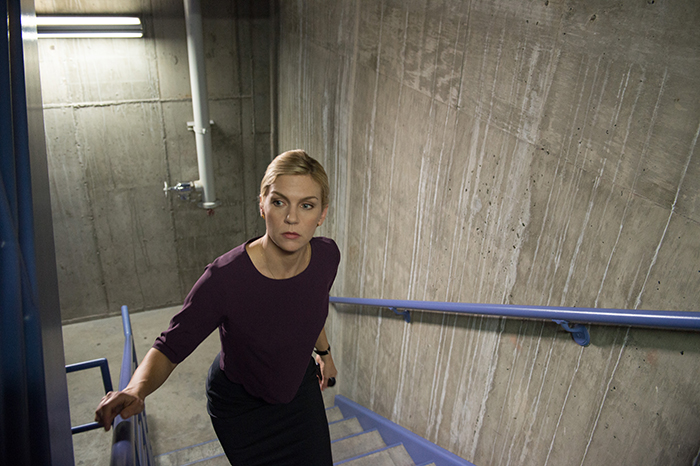
Working with new directors, on different series, or pilots, always makes me apprehensive. But it’s a healthy motivation (apprehension/motivation — weird oxymoron (?)). I mean… I’m always going to wonder ‘am I cutting this the way they want’, ‘do they like close-ups all the time’, ‘is it ok to sit in this shot for this long’, ‘are they gonna want to see this character on this line even though the other coverage is so much better’? All that goes through your head constantly. And it makes things go slower until you can find a groove you’re comfortable with and you let your instincts take over and just do what you do best. Honestly, if they really don’t like what you’re doing, they’ll tell you. If you’re waaaaaay off the mark, I suppose they could fire you. But if you let that stuff take over your thoughts, you’ll do a crappy job anyway.
I believe I have good instincts. And my aesthetic pushes past convention. And I’m proud of that. I also know that not everyone will be on board with that. And it’s all subjective. So I try to remember that instead of worrying about impressing directors and producers with what I think they might want, just do what I believe the project is dictating. Tell the best story. Give the characters the best chances to pull off how the script made me feel when I read it.
I’ve found that most of the time, directors want you to do your thing. And if they had a different / better idea, they’ll tell you and you redo it. The cool ones will ask you what you think, and actually listen to your ideas, for or against. Those are the collaborators. Those are the ones you want to work WITH (as opposed to FOR) over and over.
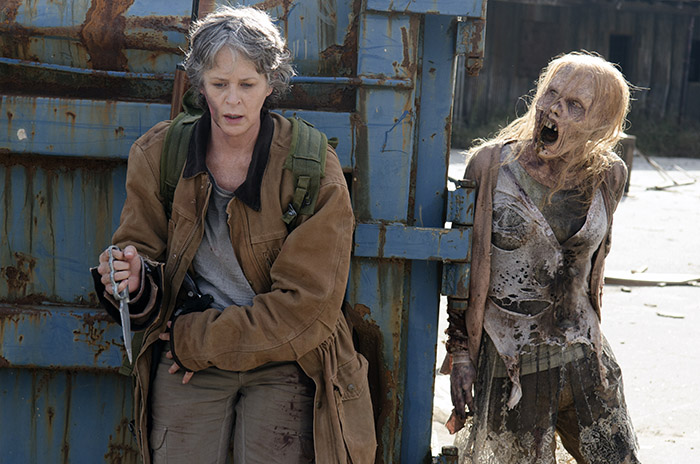
HULLFISH: NLE preference – thoughts about what you like and dislike about Avid and the other choices – I see you assisted on Lightworks.
DIXON: I don’t really have experience with other systems other than AVID — editing-wise. I did start out assisting on Lightworks back in the day. I also spent a year doing tech support for them. It was a good system. It just couldn’t keep up with the R&D. And (hope I’m getting this correct) it seemed that AVID had the advantage of the Mac platform and Lightworks was working on DOS and not through Microsoft Windows. I dunno… Eventually, AVID just became the frontrunner and I had to learn it. I was always really good with computers though. But I did learn a ton working on and for Lightworks. How to look under the hood and not be afraid. How to build computers. I still am a Windows user. I bootcamp it on a MacBook Pro. I definitely dig the MacBook hardware.
I was never a FCP user. Just really never had to work with it. And I was working so much that I didn’t have time to learn another system on the side.
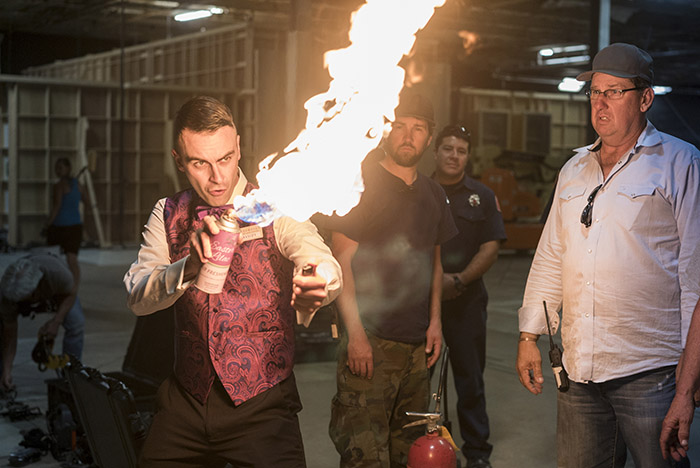
What I’ve heard… is that for editing… they’re all fairly similar. Learning the buttons to push to cut, move, trim etc, is pretty intuitive. It’s the assistant work that’s much more intensive. Organizing, searching, importing and exporting, management, etc is a lot more system-centric.
I’ve also heard that FCP pales in comparison to Avid in regard to the Trim Functions. Which I use extensively. So that wouldn’t psych me up.
FCP had a little stint of popularity a few years ago. But I guess some new version came out that everyone hated so it seems to have gone away.
Again, this is just the rumor I hear in the ether; but when you hear about some big editor on some big feature advertising that the whole thing was cut on whatever edit system (that’s not Avid), everybody has heard that the editor is getting endorsement money, and there was a team of troubleshooters from said system there to fix all the problems. I’ve been happy with Avid. And there’s a ton of features that I’ve probably never tapped into.
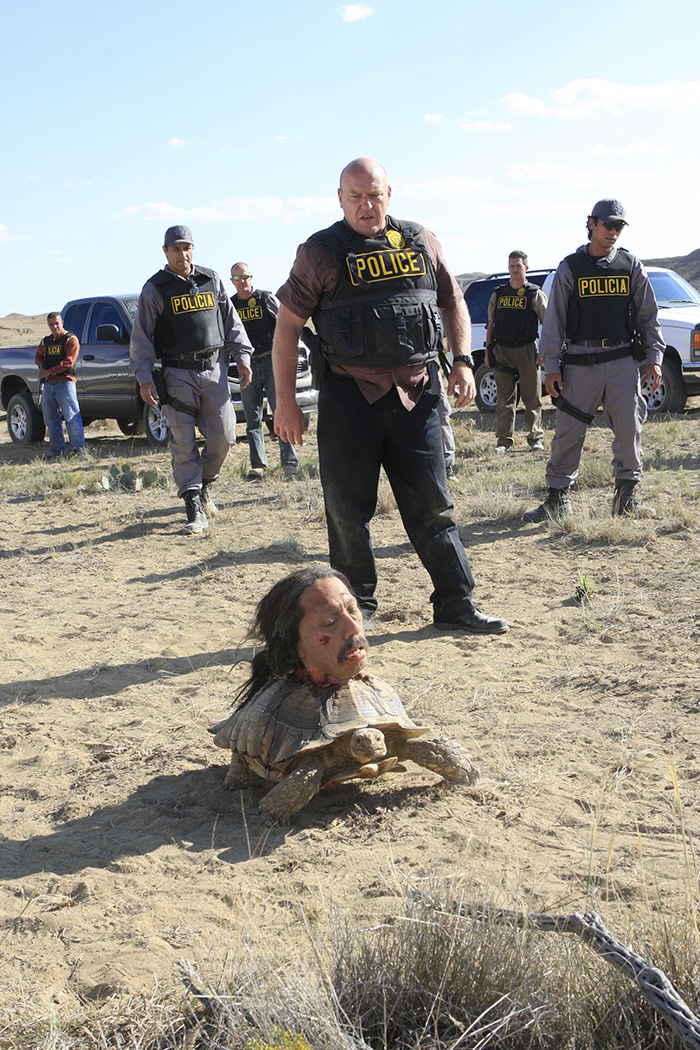
Although there is one thing I’m mad at. In some update a few years ago, the ability to stop on the exact frame you hit STOP on, stopped working. Now, you hit STOP or PAUSE, and the system stops 3 frames later. It used to ‘stop on a dime’. Very annoying.
HULLFISH: How did you make the transition from assistant to editor on Breaking Bad?
DIXON: I was so ready to move up by then. I’d been assisting for waaaayyytoooooloooonnnngggg! Although, I do admit to have spent a few too many years chasing my Big Feature Assistant dream — which never really happened. So I got into TV and just stayed there. But the situation has to be right to move up. You have to be with an editor that let’s you cut, that is not intimidated by you or your work, that encourages you, that will tell producers you did the work, etc. You also have to be on a show that gives you the time to cut. If you’re constantly doing script sync (UGH!!), VFX, SFX, Music, Media Management, Paperwork, Exports, etc, finding time to cut will be tough. Even on your own time after hours or on weekends. There also has to be some sort of avenue to move up. Like another editor leaving the show. Or your editor leaving the show. Or encouragement to share credit. Etc. Pilots are good ways for assistants to move up. If the show gets picked up, they will need to staff. And usually, pilot assistants are already very strong and ready to get an opportunity.
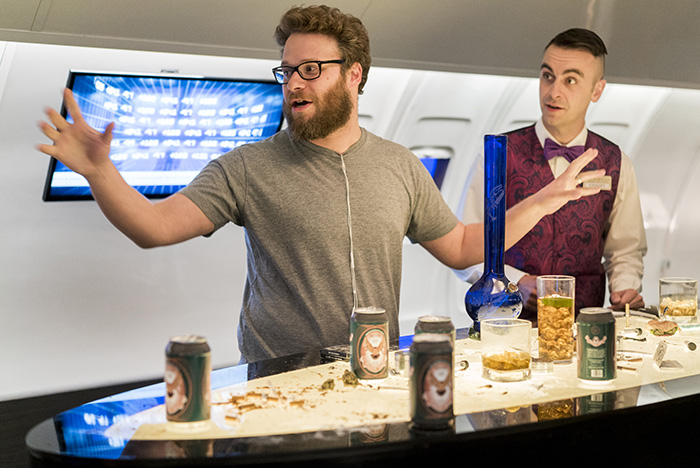
I’d been cutting scenes for editors since the beginning. Even as a PA on ‘thirtysomething’. But cutting a scene here or there is nowhere near enough training. I was lucky enough to not work for too many jerks. Most of my editors were encouraging and confident (VERY important!!). So I was looking for a strong popular editor (cause they get the good jobs!) going to a show where there was opportunity.
I was hired by my friend (editor) Juan Garza, to work on a Mini Series for NBC called “Revelations”, back in 2005. But there were several editors (I think 5 at least!) on the project and I was one of 3 or 4 assistants, working for all editors. So I met Lynne Willingham there. Who was sort of an editing hero of mine. She’d been cutting 5 seasons of The X-Files. And her husband Chris Willingham (who I didn’t meet yet, but another hero!), was cutting my favorite show at the time, “24”. Lynne eventually offered me a job on her next show “Without a Trace”. I took it because I really liked working with Lynne, I’d get to cut a lot, and everyone who’d assisted her had moved up to editor.
We went on to do Season 4 and part of Season 5 of “Without a Trace”. I started cutting a scene a day. Then 2 scenes per day. Then in Season 5, I asked her if I could start cutting half of the show. I needed to build up chops. Learn how to pace Acts. Learn how to transition from scene to scene. Then Lynne got the call from Vince Gilligan to do the BB pilot in Feb of 2007. So we moved onto that.
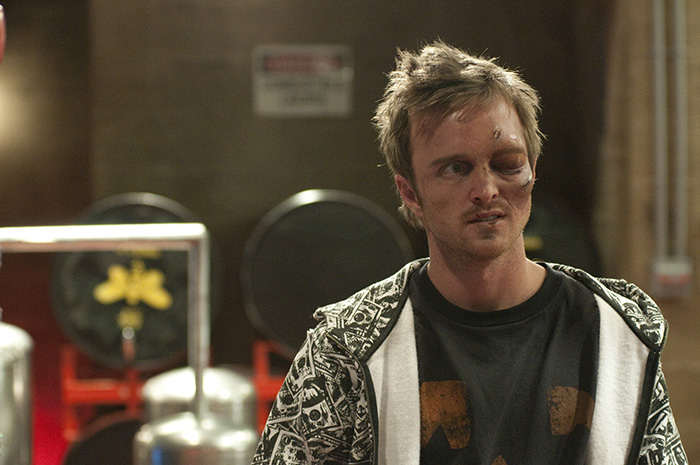 The plan was that I would get to cut a lot on that pilot so I’d have enough under my belt to ask for an editing job if it got picked up. But we had a lot of sound issues and a ton of SFX work to do so I only got to cut 2 scenes. One of them was the Meth Montage. Which proved to be enough. But I also spent a lot of time in the room with Vince and Producer Karen Moore during Director and Producer cuts. So they got to know me and the work that I could do. I asked for the job during Studio Cut time and they said ‘yes’ right then. Just had to hope it got picked up. I wasn’t nervous though. It was a good show, yes. But also, AMC had put a lot of money into it and the only other show they had was Mad Men, which was still in production and hadn’t aired yet. I figured picking us up was a no-brainer because at the very least… try to recoup the money they’d already spent. And there was no other competition on the network.
The plan was that I would get to cut a lot on that pilot so I’d have enough under my belt to ask for an editing job if it got picked up. But we had a lot of sound issues and a ton of SFX work to do so I only got to cut 2 scenes. One of them was the Meth Montage. Which proved to be enough. But I also spent a lot of time in the room with Vince and Producer Karen Moore during Director and Producer cuts. So they got to know me and the work that I could do. I asked for the job during Studio Cut time and they said ‘yes’ right then. Just had to hope it got picked up. I wasn’t nervous though. It was a good show, yes. But also, AMC had put a lot of money into it and the only other show they had was Mad Men, which was still in production and hadn’t aired yet. I figured picking us up was a no-brainer because at the very least… try to recoup the money they’d already spent. And there was no other competition on the network.
So my first episode was “And the Bag’s In The River” where Walt kills Krazy 8 in Jesse’s Basement. It was amazing and very tough and a great learning experience!!
HULLFISH: I just spoke with Joe Mitacek on “Grey’s.” How was that episode you cut? How did you get on that show for a single episode?
DIXON: I didn’t edit on Grey’s. I only assisted. And they were really nice to give me that credit.
I actually went to work for my friend (editor at the time) Ed Ornelas. He is one of the best editors I’ve ever seen! But he’s moved on to directing full time now. He spent about 5 years editing on Grey’s. I met him when he’d just moved up on the Showtime show “Huff”. I was excited to work with Ed. And actually Joe Mitacek was the Post PA. The staff really liked Joe. And they really wanted him to learn the assistant job and possibly move up when there was a slot open and he got into the union. So he spent his hiatus getting his union requirements and I believe he was eligible, he just hadn’t completed his membership or paid the fee.
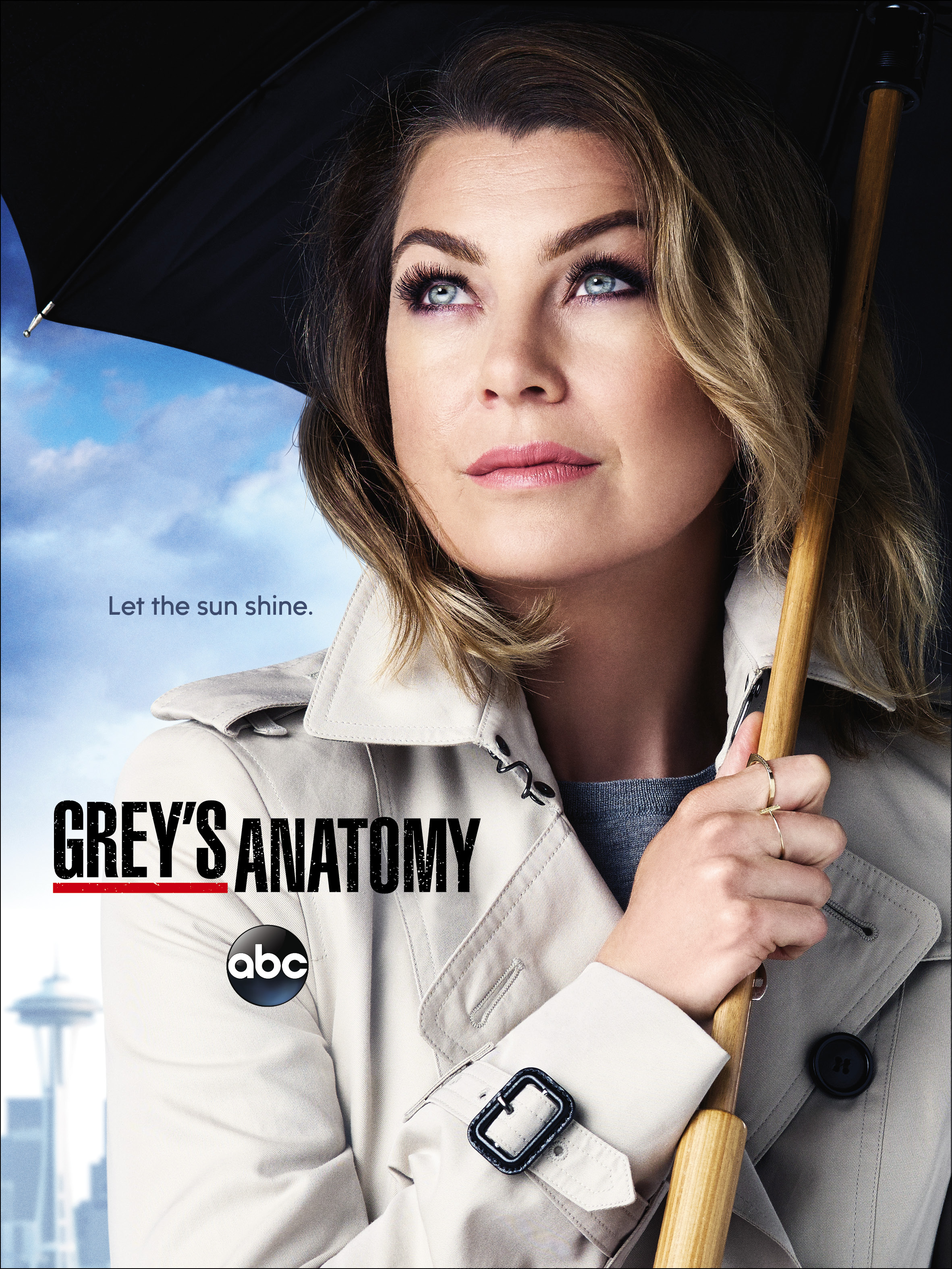 He was doing paperwork and some dailies management for me and I was teaching him some stuff. When I got a late call (late meaning it was late in the hiring season — August, I think) from Lynne Willingham at “Without a Trace”. Her assistant decided to leave the show. It was a very tough choice for me. I really loved working with Ed. But I knew I’d get to cut more working with Lynne. I also knew, there was no opportunity at Grey’s to move up and Ed was a newer editor so he shouldn’t pass work off as much as a more seasoned editor. I’d only been there for 2 weeks and I felt pretty terrible because everyone was so nice.
He was doing paperwork and some dailies management for me and I was teaching him some stuff. When I got a late call (late meaning it was late in the hiring season — August, I think) from Lynne Willingham at “Without a Trace”. Her assistant decided to leave the show. It was a very tough choice for me. I really loved working with Ed. But I knew I’d get to cut more working with Lynne. I also knew, there was no opportunity at Grey’s to move up and Ed was a newer editor so he shouldn’t pass work off as much as a more seasoned editor. I’d only been there for 2 weeks and I felt pretty terrible because everyone was so nice.
But by then, I’d done a few things to show I was a great assistant, a team player, a clutch tech, and incredibly resourceful. So surprisingly they were not angry that I was leaving, but rather incredibly encouraging. I was pretty surprised. Before I announced I was taking another job, I spoke to Joe, probing him for where in the Union membership track he was. And I nudged him, saying ‘get that taken care of as soon as you can… like in the next few weeks. Cause you never know what might present itself’. Ed was mad for about 3 weeks. And rightfully so. I’d left him in a bad position. He had help though. There were assistants there and they hired someone for him specifically to train Joe for about a month. So Joe Mitacek got his assisting job because I left. And a few years later, Ed started directing, and Joe started getting editing credits covering for Ed. Ed and I talked it out after those first few weeks back then. I apologized and he totally understood it was an opportunity I couldn’t pass up. We are still buddies today but don’t see each other nearly enough! It definitely was the right decision for me. And I’d say everyone made out well because of it.
HULLFISH: Congratulations on that. Thank you so much. It was great talking to you.
DIXON: Oh you as well. Thanks a lot.
For more interviews like this one, please visit THIS LINK and follow me on Twitter @stevehullfish.

Filmtools
Filmmakers go-to destination for pre-production, production & post production equipment!
Shop Now